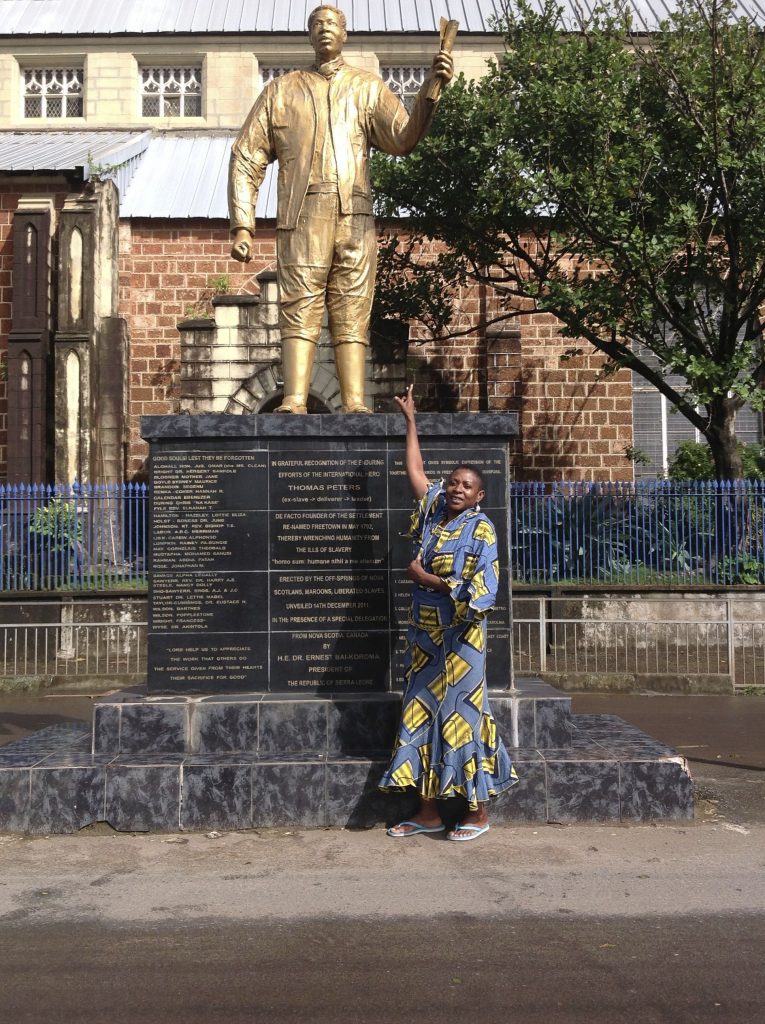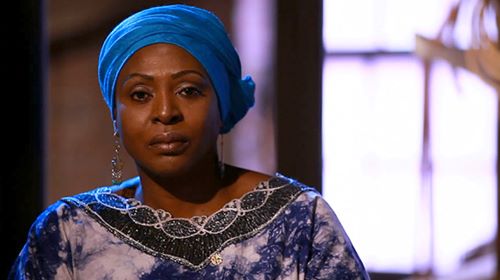Cover Image: Thomas Peters’ certificate of freedom, New York Port, permission of Dr. Afua Cooper.
Written by guest blogger Dr. Afua Cooper.
In January 1792, Black Loyalist leader Thomas Peters led, and was part of the vanguard of, 1,196 Black people who departed Canada on 15 ships bound for Freetown, Sierra Leone. The Black Loyalists had arrived in Canada as part of a cohort of emigrants from the United States at the close of the American Revolutionary War. These people, the majority of whom had been enslaved by Patriot masters and had escaped slavery to join the British standard, served in the British military in various capacities during the late war.
The British officials had promised these former slaves that, upon war’s end, they would relocate them to British territories and support them to live as free people with full rights as British subjects. Part of this support included the granting of land, basic foodstuff to tide them over for at least two years, farming implements, and social and political rights such as the right to vote and education for their children. However, on arriving in Canada, the Black Loyalists quickly discovered that the Crown officials had very little interest in granting them the rights and opportunities that were promised. Colonial officers and White people in general viewed Black people as a subordinate people whose raison d’être was to serve the White community. Thus, from their perspective it would be counter intuitive to help the Black Loyalists establish themselves as autonomous communities.
Enter Thomas Peters. He was enslaved in Louisiana and later in North Carolina but had escaped slavery in 1776 and joined the British army. He had served as a sergeant in the Black pioneers, an all-Black unit during the war. He saw action with the British in such locales as Charleston, Philadelphia, and New York. At the end of the war, Peters was in New York with thousands of other Black Loyalists awaiting transportation to Nova Scotia. The ship that Peters and 76 other Black Loyalists sailed on was named The Joseph. It sailed out of New York harbour in November 1783, but had to take refuge in Bermuda shortly after due to an Atlantic hurricane. The Black Loyalists on the Joseph wintered in Bermuda, and eventually arrived in Annapolis Royal in May of 1784. In the Digby/Annapolis, and communities on the New Brunswick side of the Bay of Fundy, Peters emerged as the bona fide leader of the Black community and wrote petition after petition to the colonial governments of New Brunswick and Nova Scotia pleading the cause of the oppressed Black people. After eight years of such action and realizing that the colonial legislatures were impervious to these pleas, Peters travelled to London in 1790 to take the case to the imperial government. What resulted from this action was the Sierra Leone opportunity. Important persons within the government and the White abolitionist community formed the Sierra Leone Company, an outfit that was planning a settlement in Sierra Leone and needed settlers. They promised Peters that the Maritime Black Loyalists—should they emigrate to Sierra Leone—would be granted full civil and political rights in the new colony.
And so it was that Peters travelled back to Canada and began organizing an exodus to Sierra Leone. On January 15, 1792, fifteen ships sailed from Halifax harbour with 1,196 emigrants. People who had their hopes dashed in Canada were now sailing to the land of their foreparents, their hearts filled with dreams of a new life of freedom. Thomas Peters, his wife Sarah, and their children, including Clairy and John, sailed on the ship The Venus. The party arrived in Sierra Leone two months later. Again, they faced disappointment as the Sierra Leone Company that ran the colony broke its promise by denying the Black community equal rights. Thomas Peters, the old warrior took up the fight again for his community in the Sierra Leone context. His struggles eventually led to the birth of a free and modern Sierra Leone. Today, he is honoured as a founding father of that state, and revered as a determined leader and civil rights advocate in Canada.
There is no full biography of Peters. My project is to write such a biography and to map his story in the 11 sites I have located him. Thus, the “Journey” part of this title.

The author with a statue of Thomas Peters in Freetown Square, Sierra Leone. Permission of Dr. Afua Cooper.
The work on Peters came out of my research on the Black Loyalists. I was fascinated by this man who initially fought for the British, but after the war, fought them at every turn for the rights of Black people. I first began by delving into archives. I looked at Black Loyalists documents in the Nova Scotia Archives and the National Archives in London. I found several documents pertaining to Peters. I also travelled to most of the places Peters lived and worked including Freetown, Sierra Leone, Digby, Nova Scotia, and Saint John, New Brunswick. In 2022, I published a chapter in a book titled Black Power in Hemispheric Perspective, in which I viewed Peters’ life through the lens of Black Power.
My current task and objective are to travel to each place where Peters put his foot and conduct research in these places. In addition to the places already listed, I intend to travel to North and South Carolina, Nigeria, Philadelphia, and New Orleans.
From my research, I hope the wider audience learns about the incredible sacrifices Peters made to the anti-racist, abolitionist, and human rights movement of the eighteenth and nineteenth centuries and recognizes his endeavours to build new societies based on justice, self-determination, and freedom.
 DR. AFUA COOPER holds a Killam Research Chair at Dalhousie University. In 2016, she launched the Black and African Diaspora Studies Program at Dalhousie University. She is currently the Principal Investigator (PI) for A Black People’s History of Canada, a one-million-dollar Canadian Heritage funded project.
DR. AFUA COOPER holds a Killam Research Chair at Dalhousie University. In 2016, she launched the Black and African Diaspora Studies Program at Dalhousie University. She is currently the Principal Investigator (PI) for A Black People’s History of Canada, a one-million-dollar Canadian Heritage funded project.
“The Spook Who Sat by the Door: Creating Black Studies in the Canadian Academy” was published in TOPIA 44: Legacies of the 1969 Sir George Williams Student Protests and is Free to Read until June 23rd.
Comments on this entry are closed.